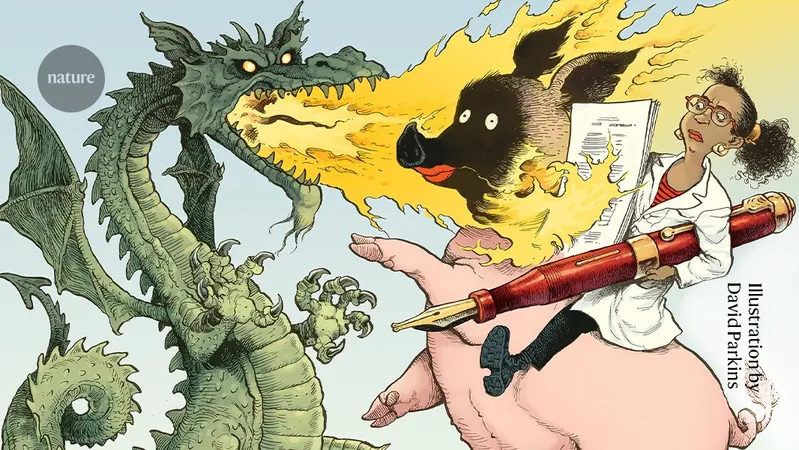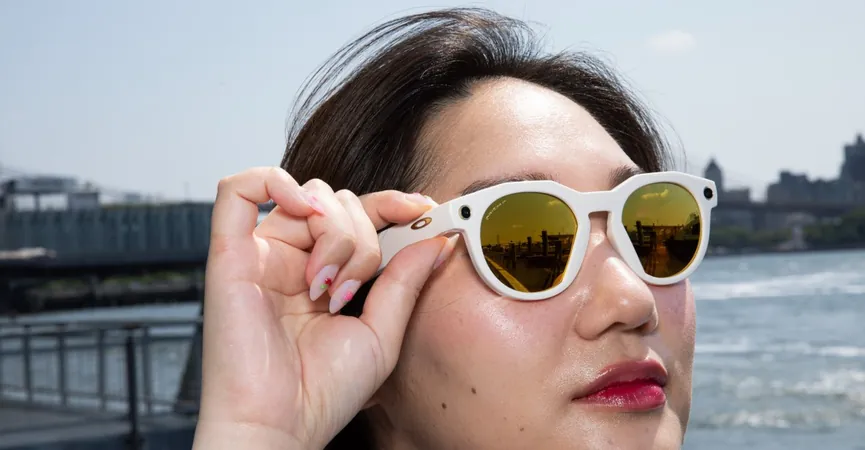
Battling Peer-Review Bullies: How to Stand Up for Your Research
2025-09-15
Author: Wai
A Painful Memory in Peer Review
Nyssa Silbiger, a marine biologist from the University of Hawai‘i at Mānoa, remembers a harsh critique that cut deep during her early academic career. In 2014, a reviewer’s comment suggesting her work was merely "lipstick on a pig" made her question her abilities as a scientist. At the time, she was just starting her PhD, and such dismissive feedback nearly derailed her confidence.
The Bullying Crisis in Science
Unfortunately, Silbiger's experience is not unique. Peer review is designed to provide critical feedback, yet it often blurs the lines into personal attacks and bullying. A survey conducted by Silbiger and Amber Stubler revealed that 58% of scientists encountered unprofessional comments, disproportionately affecting women, non-binary individuals, and people of color, complicating their career development.
A Growing Awareness and Emerging Solutions
Thankfully, awareness around this issue is increasing. Scientific journals and organizations are now actively seeking solutions to curb bullying in peer review, with editors increasingly holding reviewers accountable for their harsh comments. Emma Dunne, a palaeobiologist and ethics editor, sees progress, albeit slow, in making the review process more respectful.
Cultivating a Respectful Review Process
Criticism in peer review can be constructive, but Sally Thomas emphasizes the need for reviewers to use polite, evidence-based language. New scientists are encouraged to start with positive feedback before highlighting areas of improvement, fostering a more supportive environment.
Understanding the Roots of Harsh Reviews
Various factors lead to unprofessional reviews. Personal biases and the culture surrounding academic critiques can cause reviewers to provide feedback that is unnecessarily harsh, particularly towards early-career individuals. In some cases, scientists may worry that being too lenient could result in poor-quality research being published, while others may purposely delay papers submitted by competing teams.
How Authors Can Safeguard Themselves
Choosing the right journal is crucial. Journals utilizing single-anonymous reviews, where the reviewers’ identities are concealed, can sometimes facilitate a hostile feedback culture. Alternatives like double-anonymous reviews, where both authors and reviewers are anonymous, are becoming popular and can help reduce biased comments.
The Advantage of Transparent Review
Several journals are adopting transparent peer reviews, where feedback is published alongside papers, encouraging reviewers to be more considerate. However, early-career researchers often fear retaliation for critiquing established authors.
Handling Misconduct in Reviews
In cases of misconduct, consulting the handling editor is crucial. After enduring more unprofessional comments, Silbiger’s supervisor contacted the journal’s chief editor, detailing the unhelpful remarks and asking for action. This approach not only helped her paper get published but also increased its impact, being cited numerous times.
Turning Negativity into Growth
Despite the challenges, harsh reviews can be valuable. Authors should strive to extract constructive criticism while discarding emotional negativity. In situations involving blatant bullying, however, it’s vital to report such behavior, paving the way for a healthier academic environment.
In Conclusion: Advocacy for Change
As the dialogue surrounding peer-review bullying expands, scientists are increasingly called to advocate for respectful practices. By pushing back against hostility and creating a culture of constructive feedback, the community can foster a more inclusive and supportive research environment.


 Brasil (PT)
Brasil (PT)
 Canada (EN)
Canada (EN)
 Chile (ES)
Chile (ES)
 Česko (CS)
Česko (CS)
 대한민국 (KO)
대한민국 (KO)
 España (ES)
España (ES)
 France (FR)
France (FR)
 Hong Kong (EN)
Hong Kong (EN)
 Italia (IT)
Italia (IT)
 日本 (JA)
日本 (JA)
 Magyarország (HU)
Magyarország (HU)
 Norge (NO)
Norge (NO)
 Polska (PL)
Polska (PL)
 Schweiz (DE)
Schweiz (DE)
 Singapore (EN)
Singapore (EN)
 Sverige (SV)
Sverige (SV)
 Suomi (FI)
Suomi (FI)
 Türkiye (TR)
Türkiye (TR)
 الإمارات العربية المتحدة (AR)
الإمارات العربية المتحدة (AR)